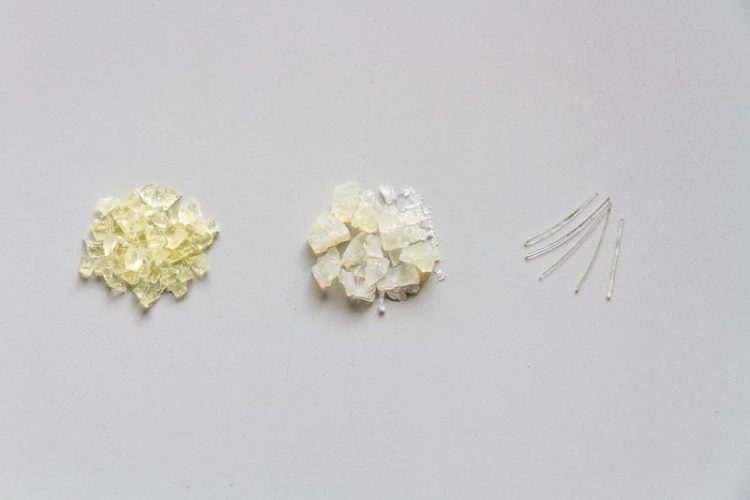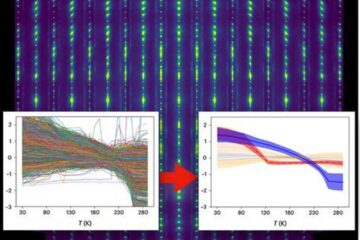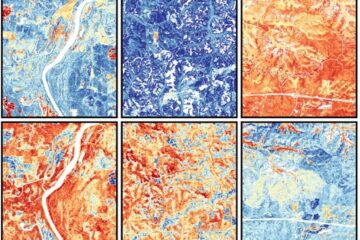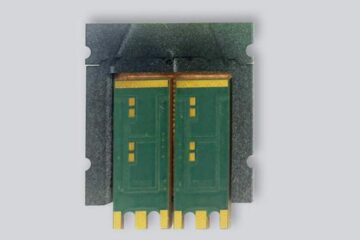Polyamides from terpenes: Amorphous Caramid-R® and semi-crystalline Caramid-S®

From wood waste to high-performance polymers: Terpenes from turpentine oil are converted to biobased, heat-stable polyamides. © Fraunhofer IGB
The Fraunhofer Institute for Interfacial Engineering and Biotechnology IGB has developed a sustainable alternative to petrochemically produced plastics using terpenes found in resin-rich wood.
The natural substances are available from conifers such as pine, larch or spruce. In the production of pulp, in which wood is broken down to separate the cellulose fibers, the terpenes are isolated in large quantities as a by-product, turpentine oil.
In the joint project “TerPa – Terpenes as building blocks for biobased polyamides” funded by the German Federal Ministry of Food and Agriculture (BMEL) through the German Agency for Renewable Resources (FNR), researchers of Fraunhofer IGB, Bio, Electro and Chemocatalysis BioCat, Straubing branch have succeeded in optimizing the synthesis of lactams from 3-carene and the subsequent polymerization to Caramid-R® and Caramid-S®, representatives of a new class of terpene-based polyamides. Recently, a patent was granted for the synthesis process of the new polyamides from terpenes.
One-pot reaction sequence and scale-up to 100 liters
The conversion of 3-carene to the corresponding lactam is possible in four successive chemical reactions that require neither complex production facilities nor expensive reagents. The key steps to the polymer building blocks 3S- and 3R-caranlactam are the selective production of the intermediate 3S-caranketone and its selective rearrangement to the isomeric 3R-caranketone.
The special feature is that the conversions can take place as a one-vessel reaction sequence in a single reactor. “This offers the possibility to produce the lactams also in simple plants without a complex reactor cascade. It is not necessary to purify the intermediate products,” explains Paul Stockmann, who developed and optimized the promising process.
The synthesis of the monomer for Caramid-S® has now been scaled to the 100-liter scale at the Fraunhofer Center for Chemical-Biotechnological Processes CBP, the Leuna branch of Fraunhofer IGB. “In this pilot production, we produced several kilograms of monomer, which allows the polymerization to be scaled to the kilogram scale,” says Dr. Harald Strittmatter, who heads the TerPa project.
Excellent thermal properties
The chemical structure of the natural substance 3-carene, which has barely been used commercially to date and would be very difficult to access from petrochemical feedstocks, leads to new polyamides that contain cyclic structures along the polymer chain. Due to these rings and other substituents, Caramid-S® and Caramid-R® have exceptional thermal properties compared to standard polyamides: The softening temperatures (glass transition) are above 110 °C.
Caranlactams expand functional properties of standard polyamides
In addition, the scientists have converted the biobased lactams to copolymers with other commercially available monomers – laurolactam for PA12 and caprolactam for PA6. This enables the possibility of changing the properties such as the transparency of the polyamides PA6 and PA12, thus extending their application profile.
Currently, the Fraunhofer scientists are working on further improvements of the monomer synthesis which is essential for an economically viable polyamide. Furthermore, they are investigating the properties of the polymers in detail to identify potential applications and implement commercial use of the biopolyamides together with industrial partners.
Dr. Harald Strittmatter
Bio, Electro and Chemocatalysis BioCat, Straubing branch
Schulgasse 11a
94315 Straubing
Phone +49 9421 187-350
Fax +49 9421 187-360
E-Mail harald.strittmatter@igb.fraunhofer.de
https://www.igb.fraunhofer.de/en/press-media/press-releases/2019/polyamides-from…
Media Contact
All latest news from the category: Trade Fair News
Newest articles

Machine learning algorithm reveals long-theorized glass phase in crystal
Scientists have found evidence of an elusive, glassy phase of matter that emerges when a crystal’s perfect internal pattern is disrupted. X-ray technology and machine learning converge to shed light…

Mapping plant functional diversity from space
HKU ecologists revolutionize ecosystem monitoring with novel field-satellite integration. An international team of researchers, led by Professor Jin WU from the School of Biological Sciences at The University of Hong…

Inverters with constant full load capability
…enable an increase in the performance of electric drives. Overheating components significantly limit the performance of drivetrains in electric vehicles. Inverters in particular are subject to a high thermal load,…





















